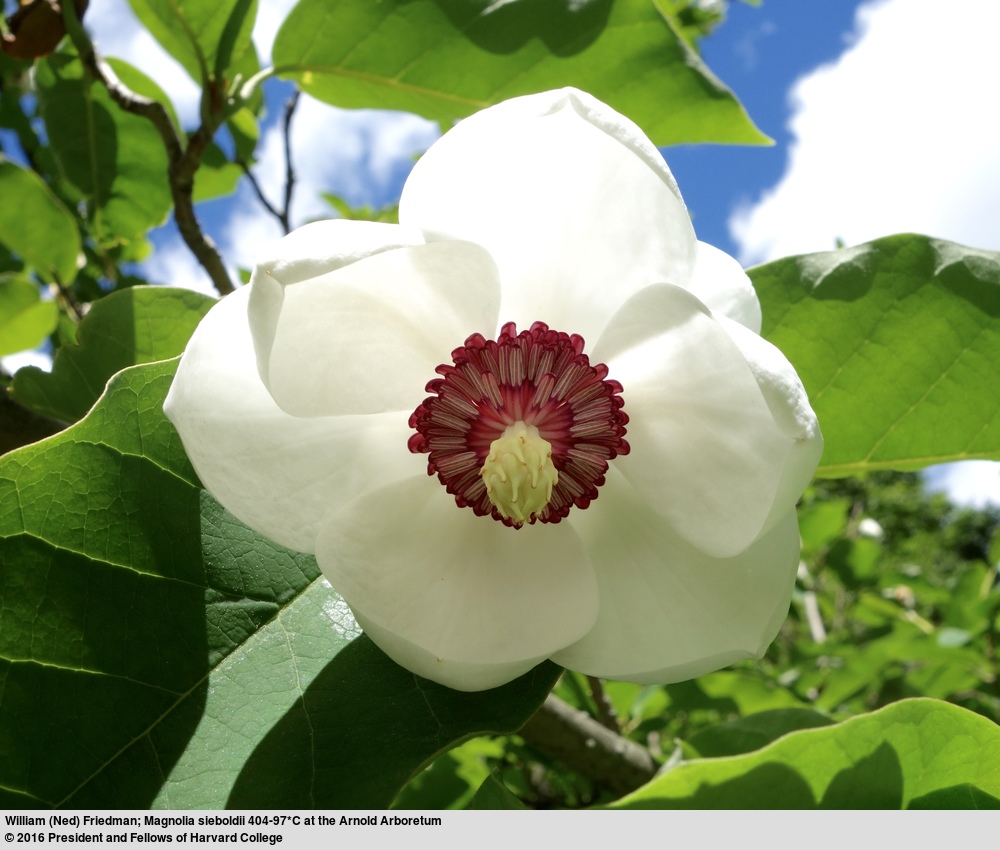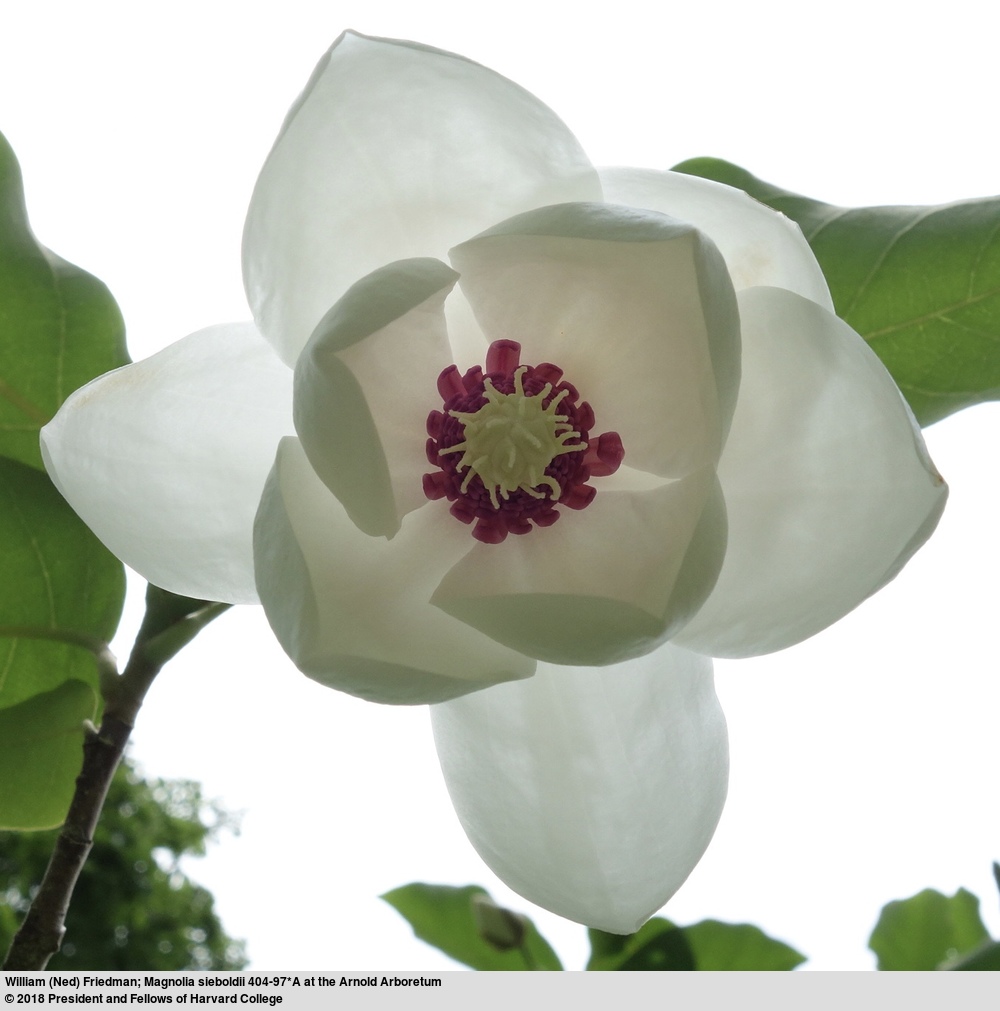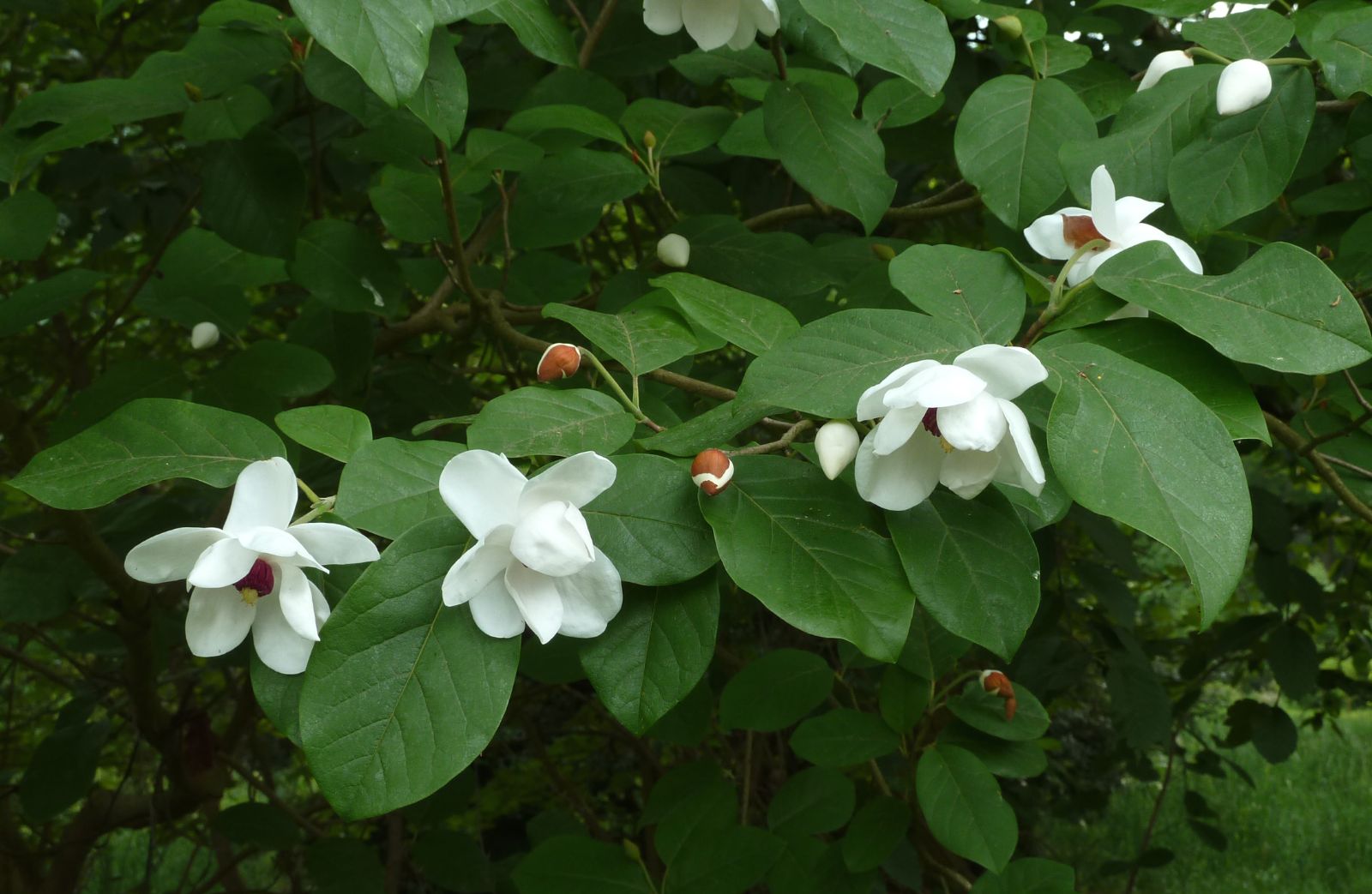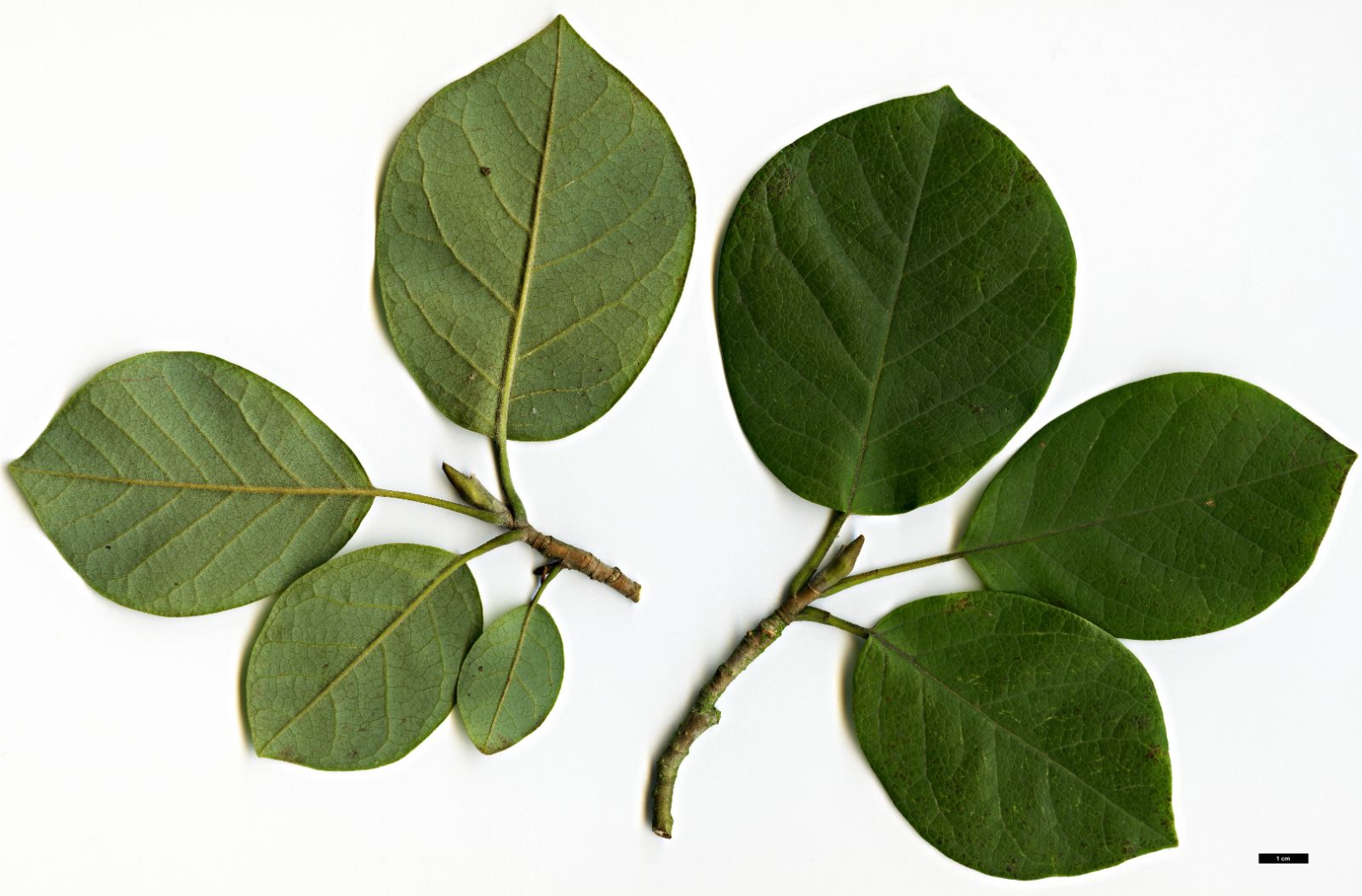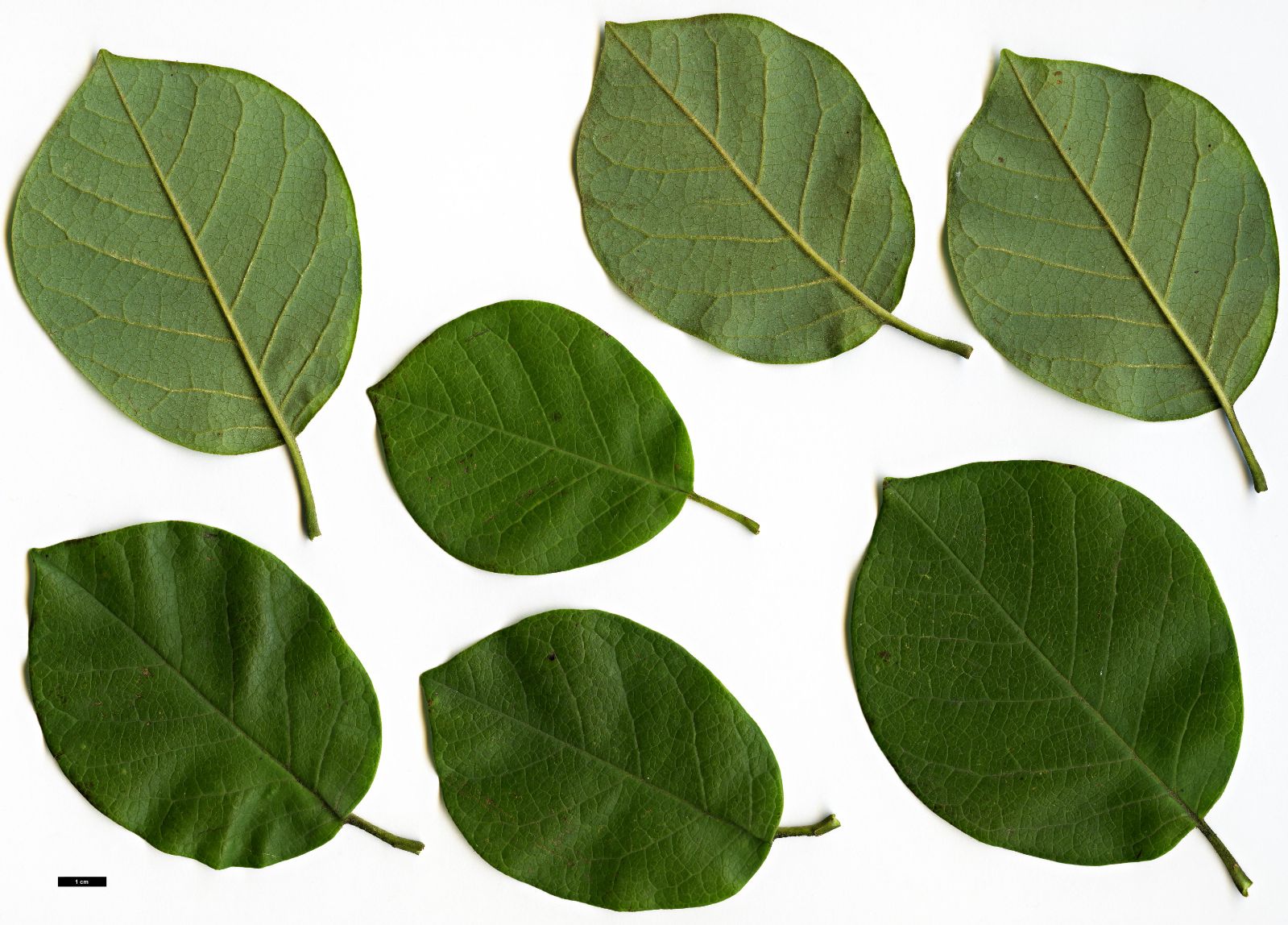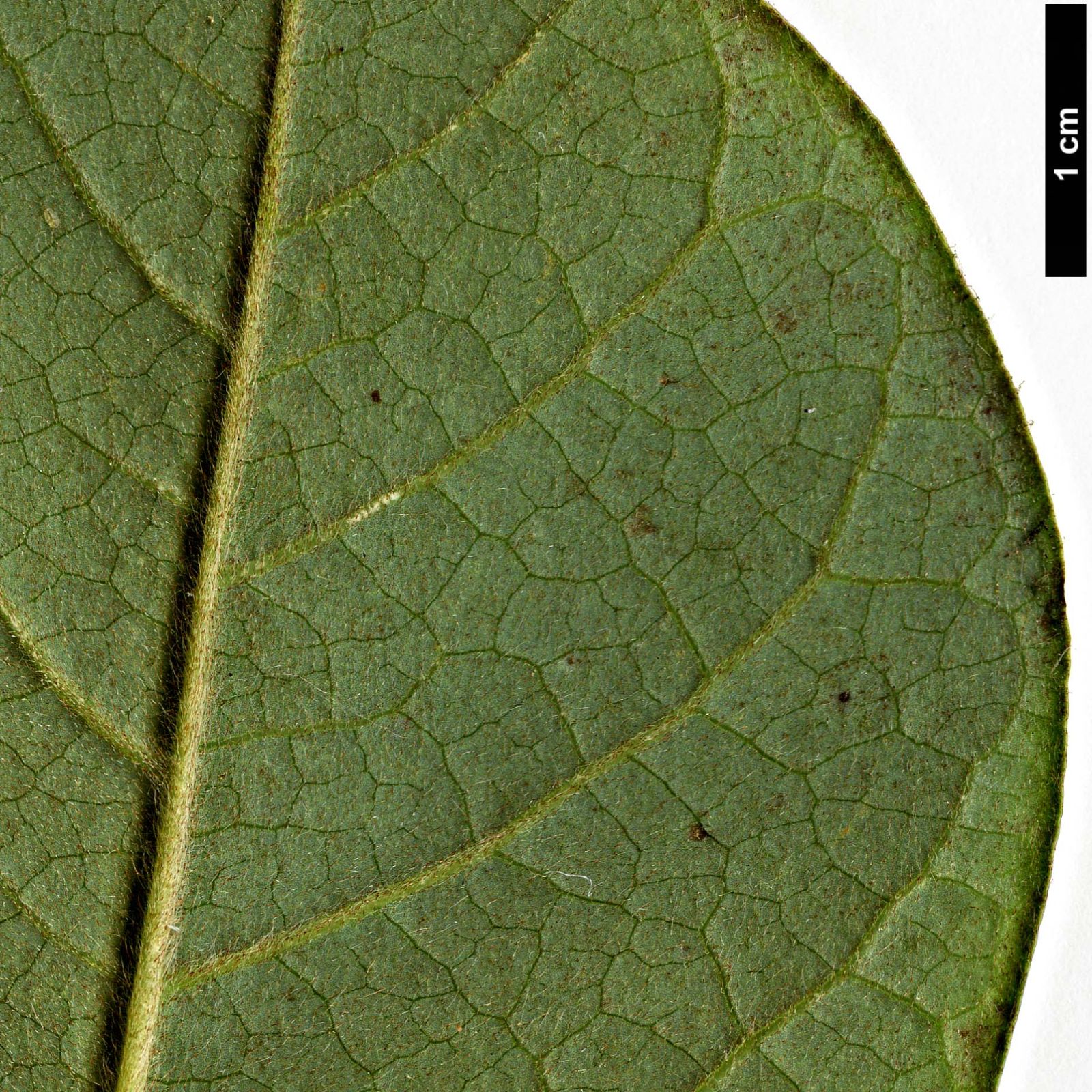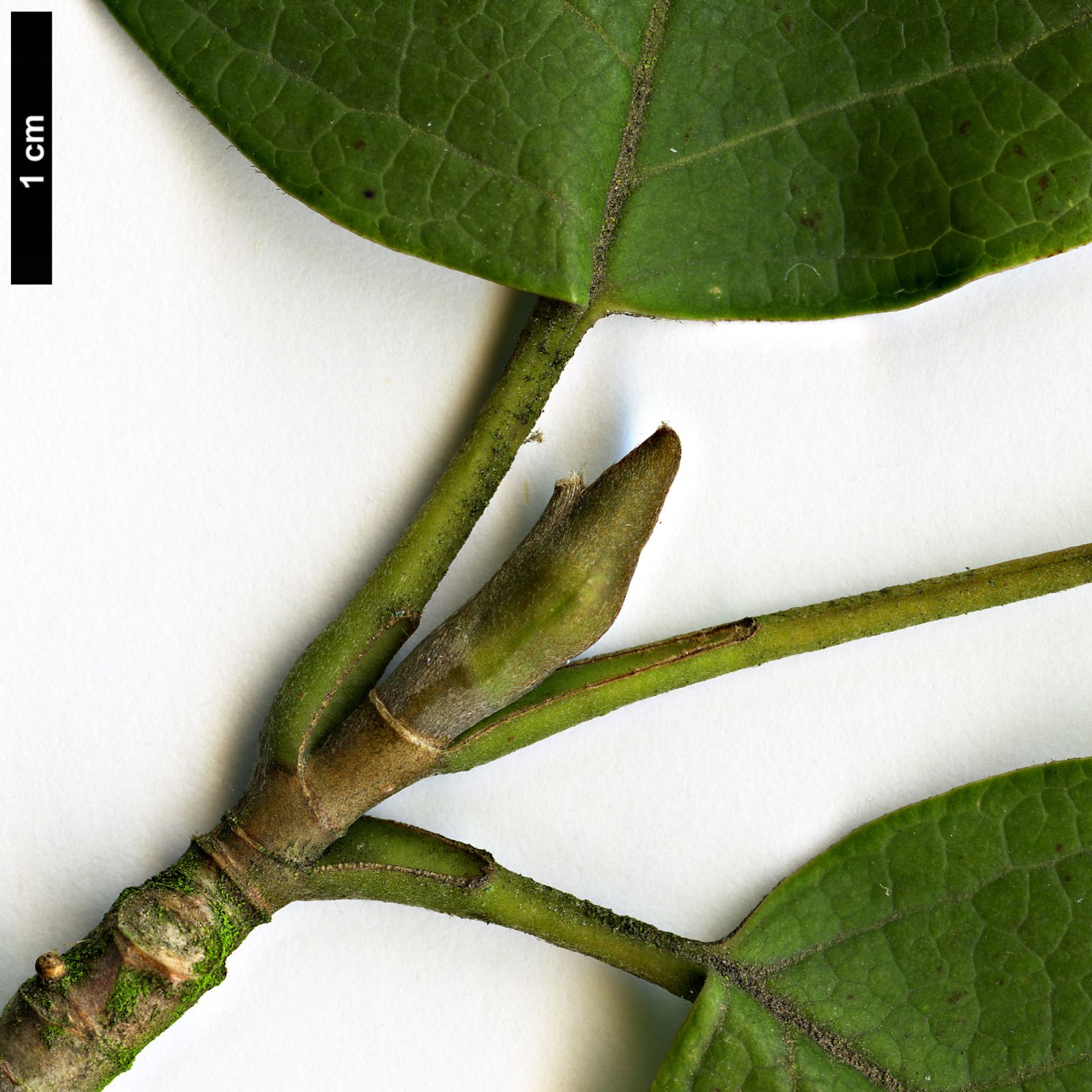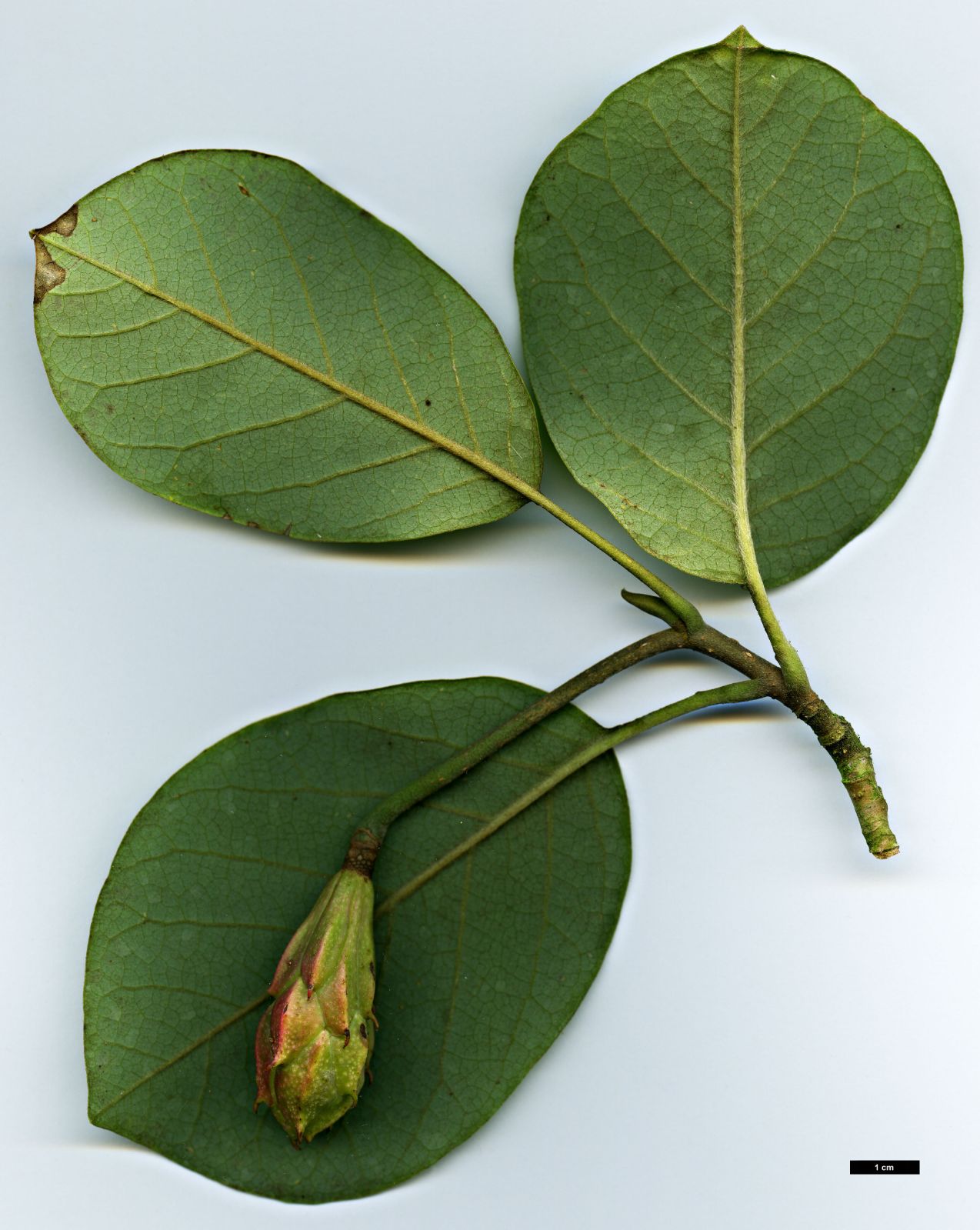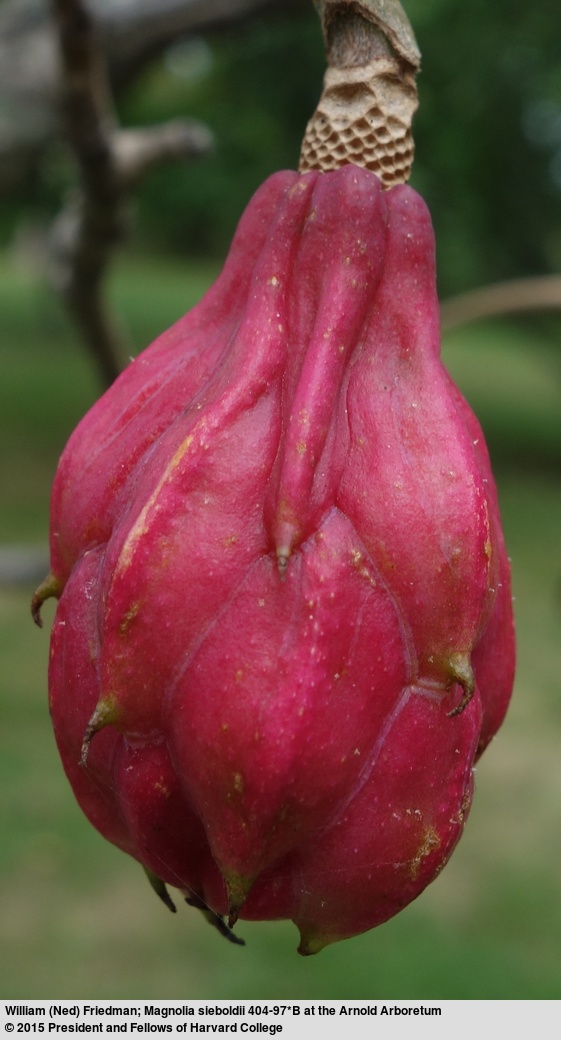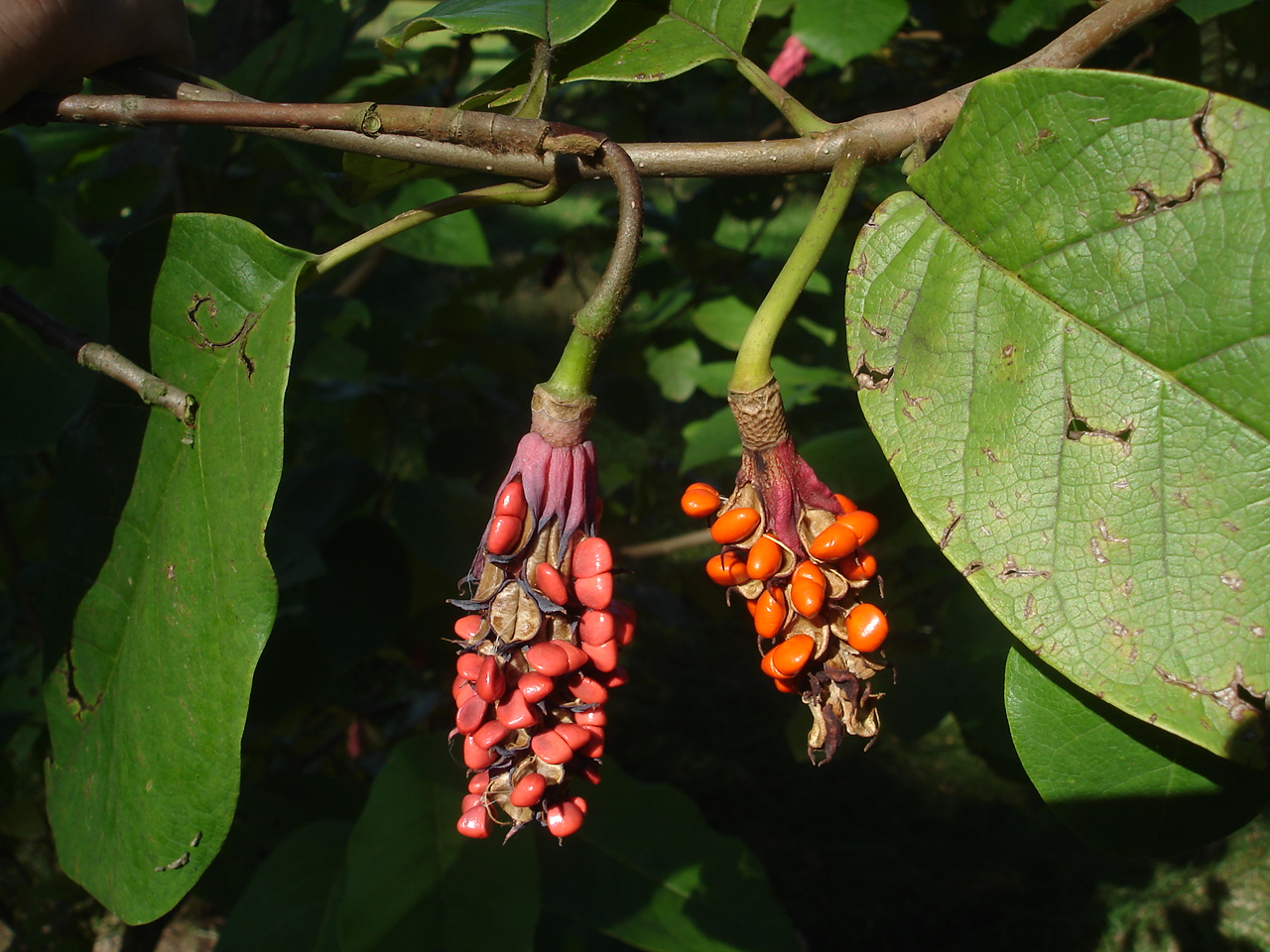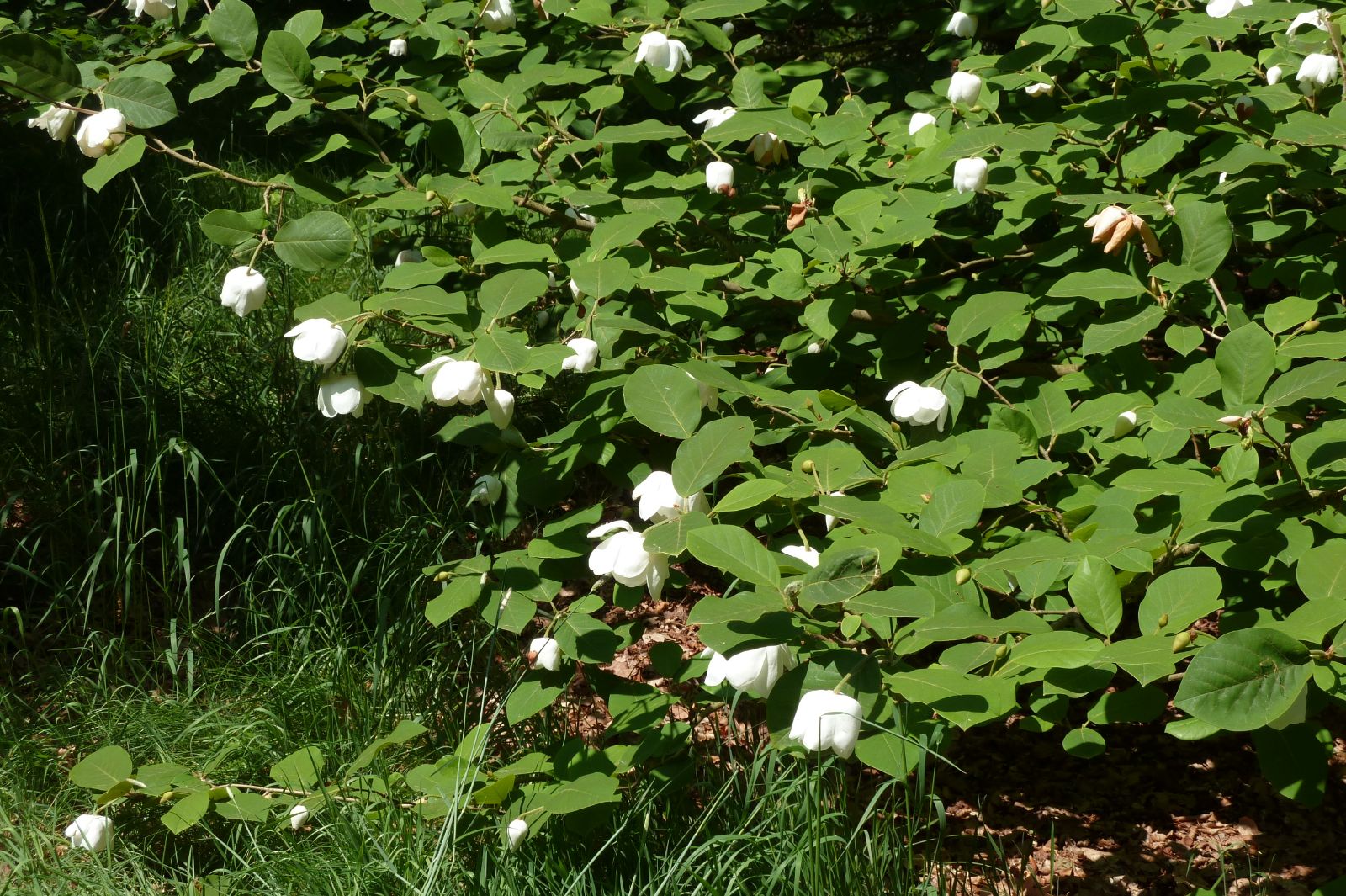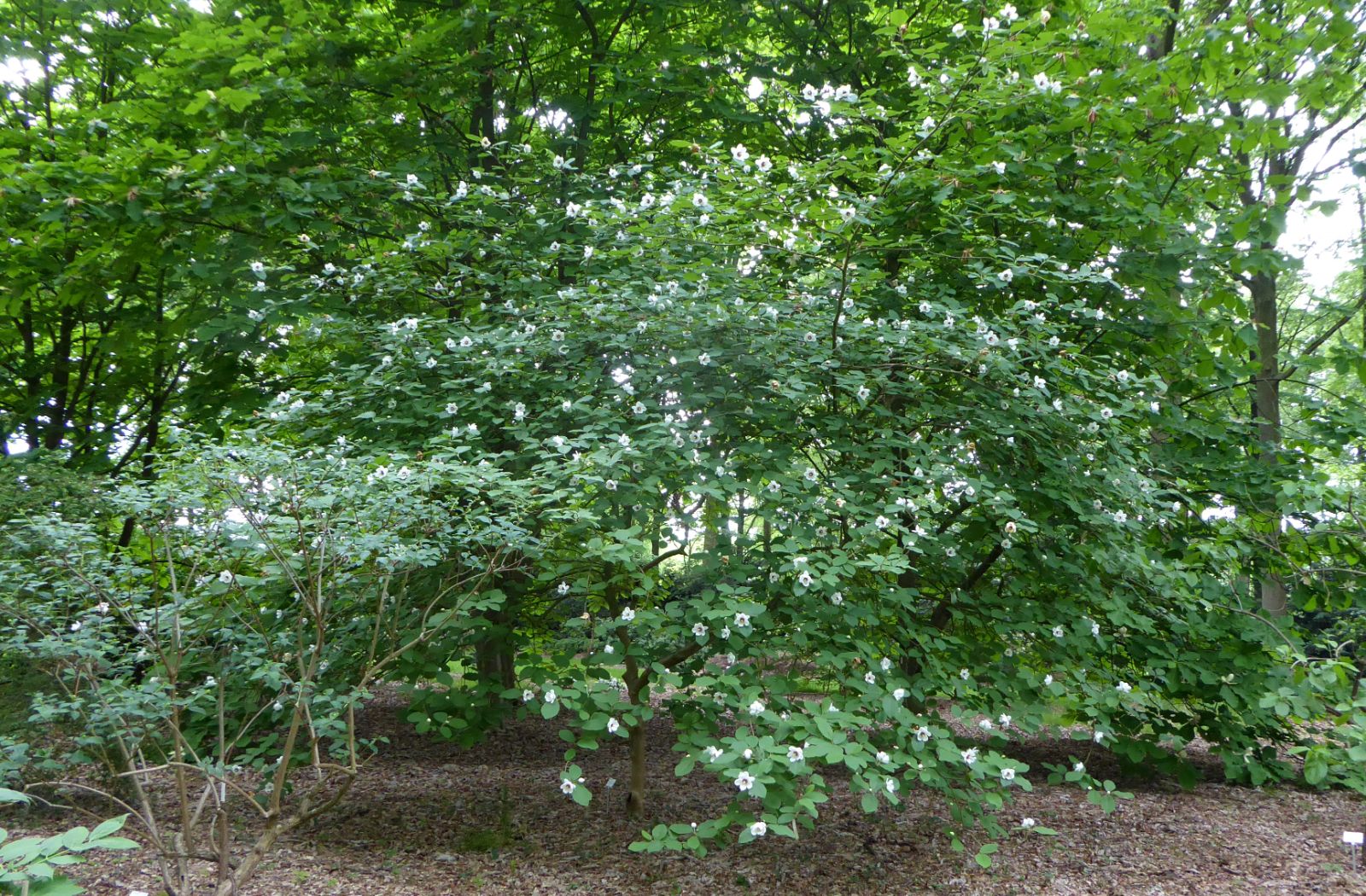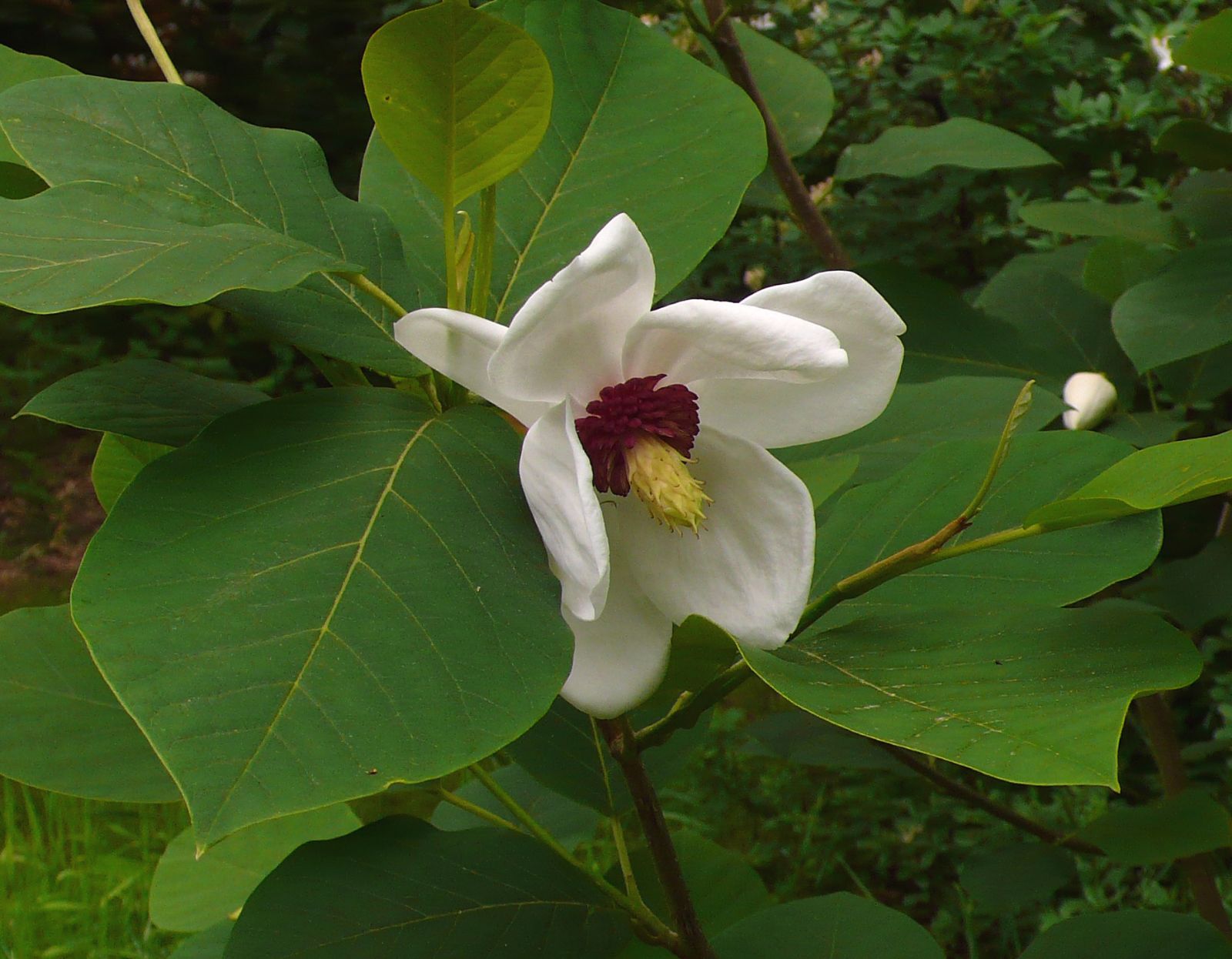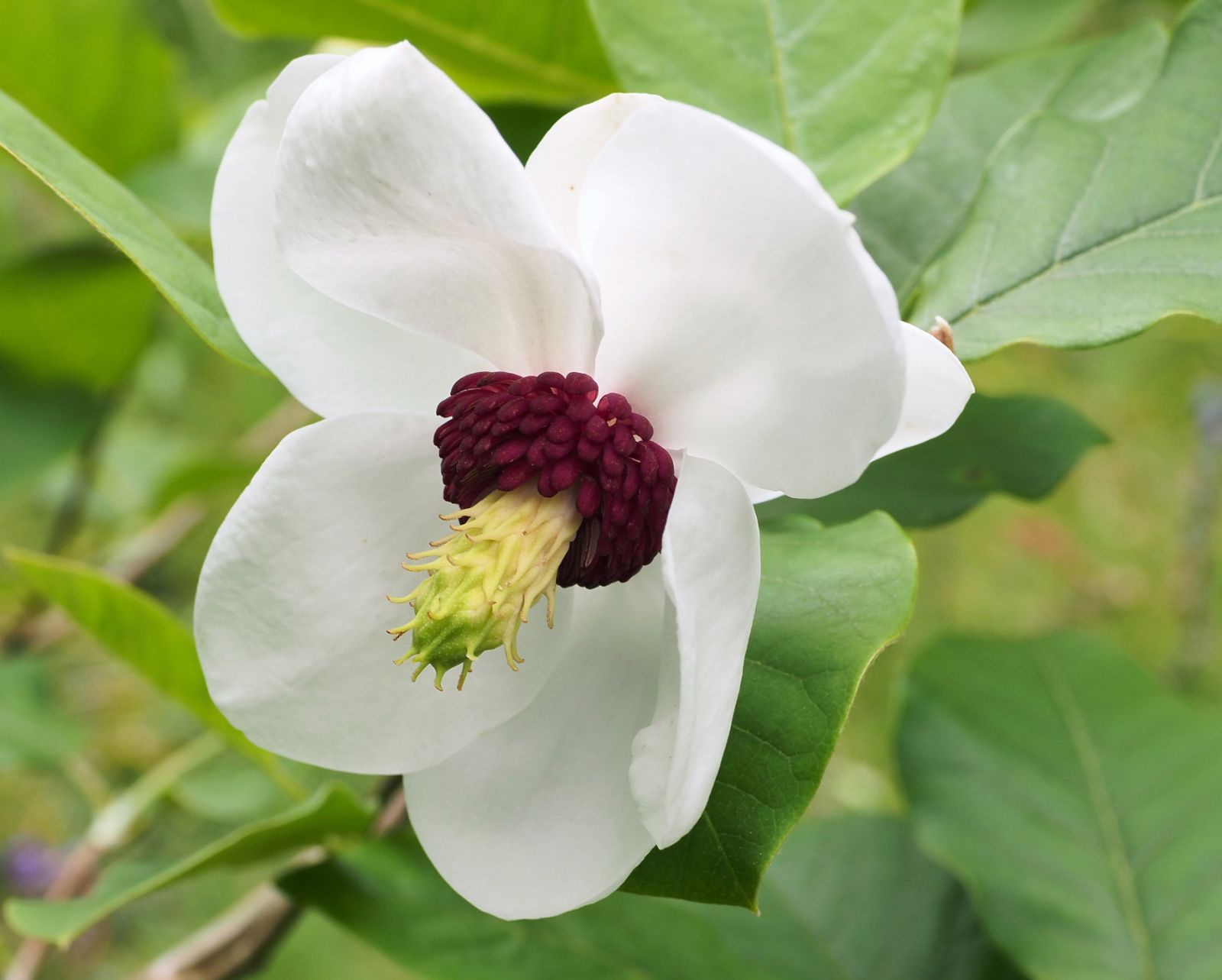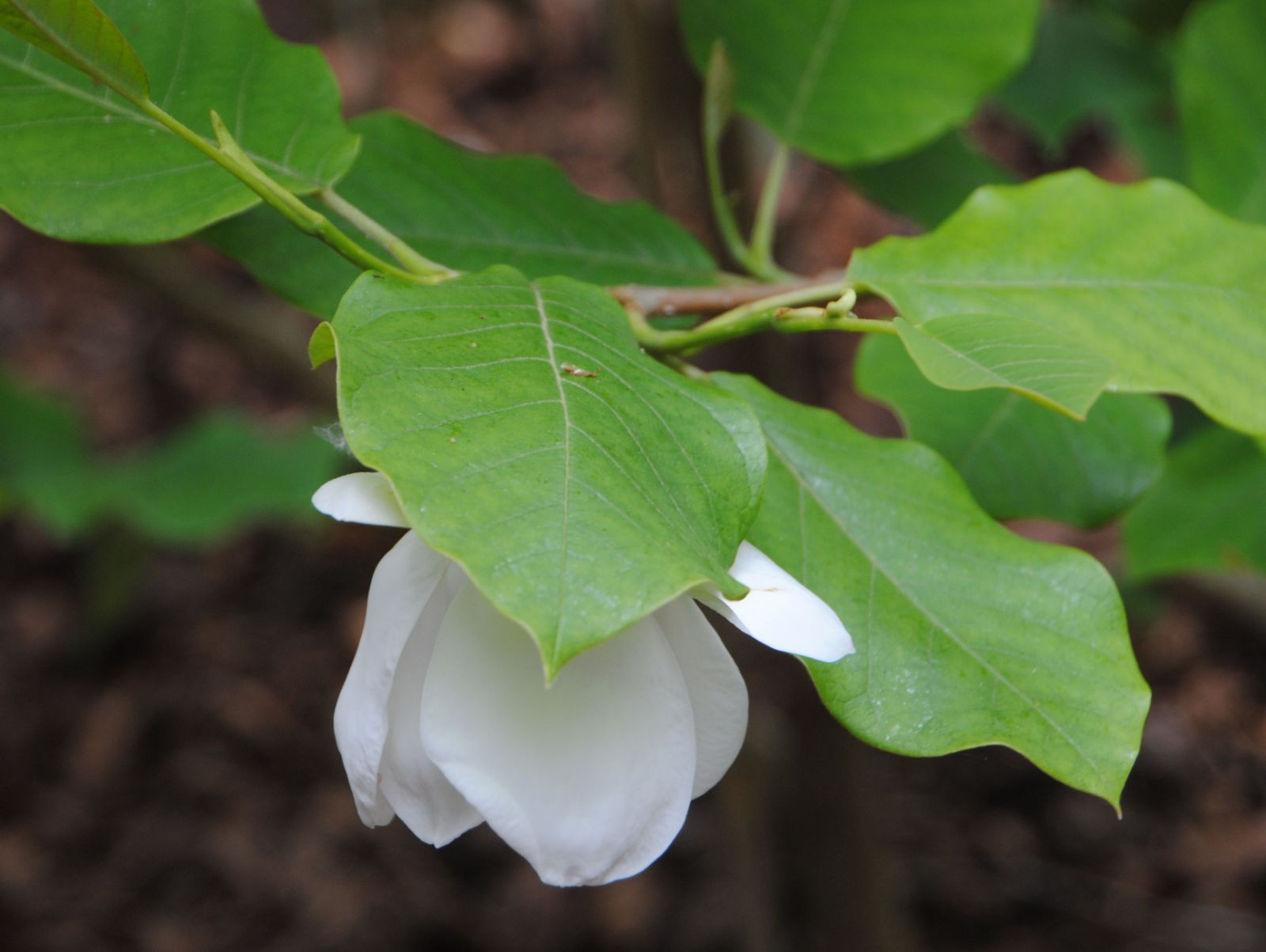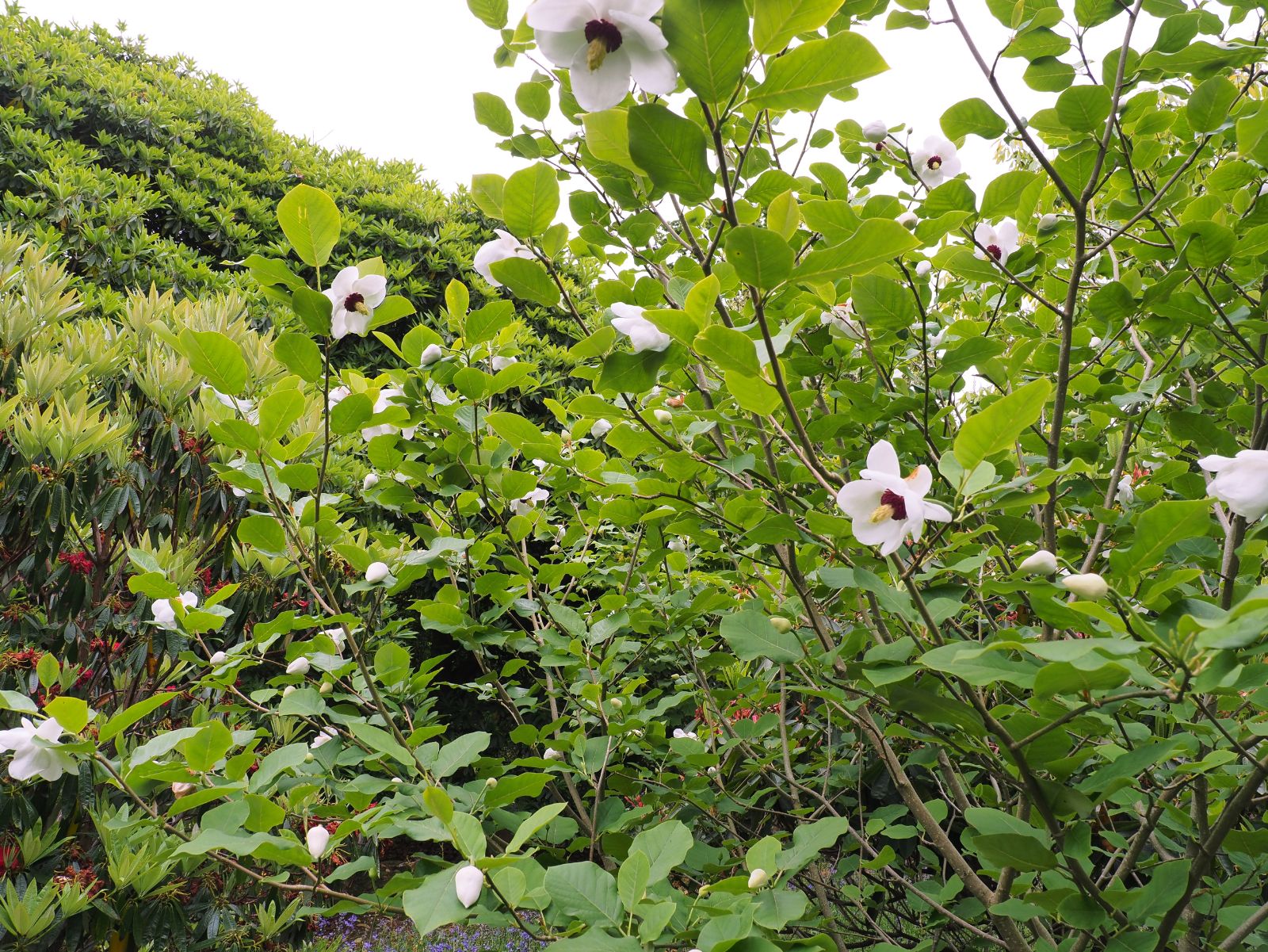Magnolia sieboldii
Sponsor
Kindly sponsored by
The Roy Overland Charitable Trust

Credits
Julian Sutton (2022)
Recommended citation
Sutton, J. (2022), 'Magnolia sieboldii' from the website Trees and Shrubs Online (treesandshrubsonline.
Genus
- Magnolia
- Section Oyama
Common Names
- Siebold's Magnolia
- Oyama Magnolia
- tian nü hua
- Oba-oyama-renge
Synonyms
- Oyama sieboldii (K. Koch) N.H. Xia & C.Y. Wu
- Magnolia parviflora Siebold & Zucc.
Infraspecifics
Other taxa in genus
- Magnolia acuminata
- Magnolia × alba
- Magnolia amabilis
- Magnolia amoena
- Magnolia aromatica
- Magnolia biondii
- Magnolia × brooklynensis
- Magnolia campbellii
- Magnolia cathcartii
- Magnolia cavaleriei
- Magnolia caveana
- Magnolia champaca
- Magnolia changhungtana
- Magnolia chapensis
- Magnolia compressa
- Magnolia conifera
- Magnolia Cultivars A
- Magnolia Cultivars B
- Magnolia Cultivars C
- Magnolia Cultivars D
- Magnolia Cultivars E
- Magnolia Cultivars F
- Magnolia Cultivars G
- Magnolia Cultivars H–I
- Magnolia Cultivars J
- Magnolia Cultivars K
- Magnolia Cultivars L
- Magnolia Cultivars M
- Magnolia Cultivars N–O
- Magnolia Cultivars P
- Magnolia Cultivars Q–R
- Magnolia Cultivars S
- Magnolia Cultivars T
- Magnolia Cultivars U–V
- Magnolia Cultivars W–Z
- Magnolia cylindrica
- Magnolia dandyi
- Magnolia dawsoniana
- Magnolia de Vos and Kosar hybrids
- Magnolia decidua
- Magnolia delavayi
- Magnolia denudata
- Magnolia doltsopa
- Magnolia duclouxii
- Magnolia ernestii
- Magnolia figo
- Magnolia floribunda
- Magnolia × foggii
- Magnolia fordiana
- Magnolia foveolata
- Magnolia fraseri
- Magnolia fulva
- Magnolia globosa
- Magnolia × gotoburgensis
- Magnolia grandiflora
- Magnolia grandis
- Magnolia Gresham hybrids
- Magnolia guangdongensis
- Magnolia hookeri
- Magnolia insignis
- Magnolia Jury hybrids
- Magnolia × kewensis
- Magnolia kobus
- Magnolia kwangtungensis
- Magnolia laevifolia
- Magnolia lanuginosa
- Magnolia leveilleana
- Magnolia liliiflora
- Magnolia × loebneri
- Magnolia lotungensis
- Magnolia macclurei
- Magnolia macrophylla
- Magnolia martini
- Magnolia maudiae
- Magnolia nitida
- Magnolia obovata
- Magnolia officinalis
- Magnolia opipara
- Magnolia × proctoriana
- Magnolia × pruhoniciana
- Magnolia rostrata
- Magnolia salicifolia
- Magnolia sapaensis
- Magnolia sargentiana
- Magnolia sinensis
- Magnolia sinica
- Magnolia sinostellata
- Magnolia × soulangeana
- Magnolia sprengeri
- Magnolia stellata
- Magnolia tamaulipana
- Magnolia × thomsoniana
- Magnolia tripetala
- Magnolia × veitchii
- Magnolia virginiana
- Magnolia × wieseneri
- Magnolia wilsonii
- Magnolia xinganensis
- Magnolia yunnanensis
- Magnolia yuyuanensis
- Magnolia zenii
Deciduous shrub or tree to 10 m. Annual twigs pale greyish brown, slender, ~3 mm diameter, with appressed grey hairs when young. Leaf blade obovate, (6–)9–15(–25) × 4–9(–12) cm, membranous; lower surface glaucous, usually with brown and white multicellular trichomes, scattered yellow dots, and long, silky white hairs along major veins; upper surface with curved hairs on major veins; secondary veins 6–8 on each side of midvein; base broadly cuneate, truncate, or subcordate; apex abruptly, narrowly acute to shortly acuminate. Petiole 1–4(–6.5) cm, with brown and white appressed hairs; stipular scar nearly ½ as long as petiole. Peduncle 3–7 cm, with dense brown and greyish-white appressed hairs. Flowers appearing with the leaves, cup-shaped at first but saucer-shaped later, 7–10 cm across, erect to slightly nodding, fragrant. Tepals 9, white, subequal; outer 3 tepals oblong-obovate to obovate, 4–6 × 2.5–3.5 cm, base with white hairs, apex broadly rounded to rounded; inner 6 tepals smaller, base gradually narrowing to shortly clawed. Stamens purplish red, 0.9–1.1 cm; connective not exserted; filaments 3–4 mm; anthers ~6 mm, thecae adnate, apex slightly emarginate. Gynoecium green, ellipsoid, ~1.5 cm. Fruit red when mature, obovoid to ellipsoid, 2–7 cm; mature carpels narrowly ellipsoid, ~1 cm, dehiscing into 2 valves along dorsal sutures, apex with ~2 mm beak. Seeds cordate, 6–7 × 6–7 mm, apex finely tipped; testa red; endotesta brown. Flowering March-April, fruiting September-October (China). Diploid 2n=38. (Xia, Liu & Nooteboom 2008; Murata & Murata 2016).
Distribution China NE North Korea South Korea
Habitat Forests, streamsides; 1600–2000 m.
USDA Hardiness Zone 5-9
RHS Hardiness Rating H6
Conservation status Least concern (LC)
Belonging to the tight-knit group of species in Section Oyama, Magnolia sieboldii has much in common with its relatives MM. globosa, sinensis and wilsonii. Usually a large, widely-spreading shrub which needs plenty of room to fulfil its potential, its main ornamental feature is its fragrant white flowers, ‘probably the purest white of all the magnolia flowers’ (Gardiner 2000) with prominent red stamens, emerging after the leaves in late May or June and continuing intermittently through the summer. They are usually held below the horizontal rather than facing the ground, showing off the contrasting stamens to good effect. It fruits freely and attractively in gardens, from a young age (Treseder 1978).
It can be distinguished from its close relatives as follows (Xia, Liu & Nooteboom 2008). M. sieboldii differs from both M. globosa and M. wilsonii in its leaves generally being broadest above the middle (vs. below the middle); in the stipular scar almost half the length of the petiole (vs. almost as long); and in the lack of purple in the branchlets; and from M. globosa in its more widely opening flowers, and its lack of rufous hairs on the leaf undersides. It differs from M. sinensis in having fewer secondary leaf veins (6–8 each side of the midrib vs. 9–13); in the stipular scar being slightly shorter (about ½ vs. ⅔ as long as the petiole); and in the lower leaf surface having brown and white multicellular trichomes, and yellow dots (vs. pale yellow viill).
M. sieboldii became known to Western science through the plants of Korean origin cultivated in Japan. It was not then understood that typical M. sieboldii is not a Japanese native, although the horticulturally inferior subsp. japonica exists as rare natural populations scattered across western Japan. Typical subsp. sieboldii had long been cultivated in Japan, where cut flowers are often used to decorate tea houses, although the Japanese association between drooping flowers and death may have limited its popularity as a garden ornamental (Yinger 1980). It was first described as M. parviflora (Siebold & Zuccarini 1846); Koch’s later M. sieboldii is now used because the epithet M. parviflora Blume had been published earlier for another plant. The date of introduction to Europe is uncertain; it probably reached the Veitch nursery around 1879, and RBG Kew had material from the Yokohama Nursery Company in 1893 (Bean 1981). Whether this early material included subsp. japonica (see below) is not known for certain, but better plants with particularly bright red stamens are linked to a collection made by Ernest Wilson in 1918 in the Kumgang (‘Diamond’) Mountains of what is now North Korea (Wilson 1920; Bean 1981). Wilson enthused over the floral display dominated by M. sieboldii with pink Rhododendron schlippenbachii in these mountains (Wilson 1927), encouraging his American gardening audience with their low winter temperatures, ‘more severe than in Massachusetts’ (Wilson 1920).
It has proved an amenable plant in Western gardens. While a moisture retentive, acidic soil in light shade is ideal, it seems to be more tolerant of lime than was once thought, although thin chalk soils are a step too far (Treseder 1978). Wilson’s expectation of cold hardiness was well founded. It is a ‘very easy’, wind-tolerant garden shrub at 62°N in Norway (Larsen 2009), and grows as far east as the Kórnik and Rogow arboreta, Poland (Anisko & Czekalski 1991). In North America it is suited both to the Pacific Northwest and the Northeast (Cover 2004); drier areas and those with hot summers are less appropriate. It seems to be at the very limit of what it can tolerate in the continental climate of Kansas City, Missouri/Kansas (Branhagen 2006).
Nurseryman Neil Treseder (1978) noted that this species layers more readily than most magnolias.
Magnolia sieboldii hybridizes in gardens with M. obovata to give the lovely M. × wieseneri.
'Colossus'
Flowers large, to 15 cm with 10–17 textured tepals, very fragrant. Leaves ~30× 15 cm. A colchicine-induced polyploid (but probably not the hexaploid initially expected (Lobdell 2021)) raised about 1990 by August Kehr, NC (Callaway 1998). Starred as a worthwhile cultivar by Philippe de Spoelberch, Belgium (pers. comm. 2021).
'Genesis'
Tightly branched, vigorous, medium sized shrub; flowers and leaves typical of subsp. sieboldii, but with stamens twice the normal size, over a long period from late May to mid July in southern England. Raised by August Kehr of Hendersonville, NC, registered 1985: perhaps not the tetraploid that it was originally thought to be (Parris et al. 2010).
'Harold Epstein'
Semi-double to fully double flowers; registered by August Kehr, 1993, probably a seedling purchased from New York plantsman Harold Epstein.
'Kwanso'
One of the rare and confusing double-flowered forms (Kalleberg 1989). Described both as fully double, with up to 36 tepals (Gardiner 2000), and as the established Japanese name for a more-or-less double form (B. Blackburn fide Lobdell 2021).
'Pride of Norway'
Another of August Kehr’s polyploids, with flowers to 13 cm across, 10–14 tepals, and very large leaves. The later flowers in August are especially large, often facing downwards under their own weight; Otto Kalleberg (2007) considers it even showier than ‘Colossus’.
'Semiplena'
Synonyms / alternative names
Magnolia sieboldii 'Semi-Plena'
Another of the multi-tepalled forms; originated before 1940.
subsp. japonica K. Ueda
Distinguished from subsp. sieboldii as follows: medium shrub (at least in Japanese material); stamens creamy (again, at least in Japanense plants), red-purple only along the connective (vs. stamens red-purple); filaments less than ⅓ length of anthers (vs. filaments about ½ length of anthers); open flower 6–8 cm across (vs. 7–10 cm). (Murata & Murata 2016; Ueda 1980).
Distribution
- China – Anhui, Guangxi
- Japan – C & S Honshu, Shikoku, Kyushu, Yakushima
Rather recently described (Ueda 1980), this covers the rare, scattered wild M. sieboldii populations of western Japan (all found at elevations of 1000–2000 m) and south east China. The indigenous Japanese plants had not previously been distinguished from subsp. sieboldii, widely cultivated in Japan but of Korean origin. Kikuchi & Osone (2021) found deep genetic divergence within the species, reflecting the morphological subspecies in some but far from all types of DNA sequence; there is clearly more to understand about patterns of variation in M. sieboldii. Japanese examples of subsp. japonica are typically spreading shrubs with procumbent stems, no more than 3 m tall, and have proved difficult to cultivate in lowland Japan (Murata & Murata 2016; Ueda 1980).
Some early introductions to Europe probably represented this subspecies. Bean (1981) noted that a ‘very poor form’ with pinkish stamens was ‘sometimes still seen in gardens’. Early flushing makes the young foliage vulnerable to frost (Foster 2011). A Tom Hudson collection from N Guangxi is grown at Tregrehan, Cornwall. It has pale pink stamens and comes into growth a fortnight later, perhaps later still when grafted onto M. kobus rootstock (Foster 2011). Material of M. sieboldii from BBJMT 235 (wild collected in Nagano Prefecture, Japan, 2005) grows at both RBG Edinburgh and Benmore (Royal Botanic Garden Edinburgh 2022): it might be expected to represent this subspecies.
This remains a rare plant in Western gardens, interesting but of doubtful horticultural merit.
'White Flounces'
Double flowered, with 16–24 tepals opening flat rather than cup shaped. Selected and named by the polymathic Harry Heinemann, MA, 1991.

